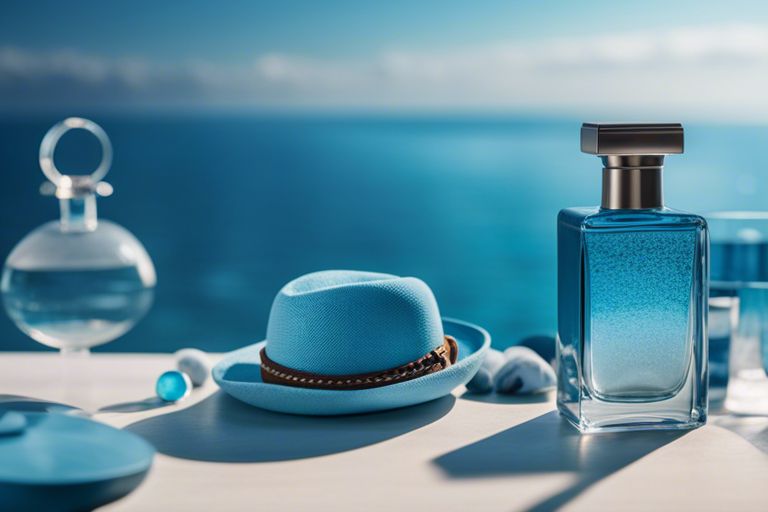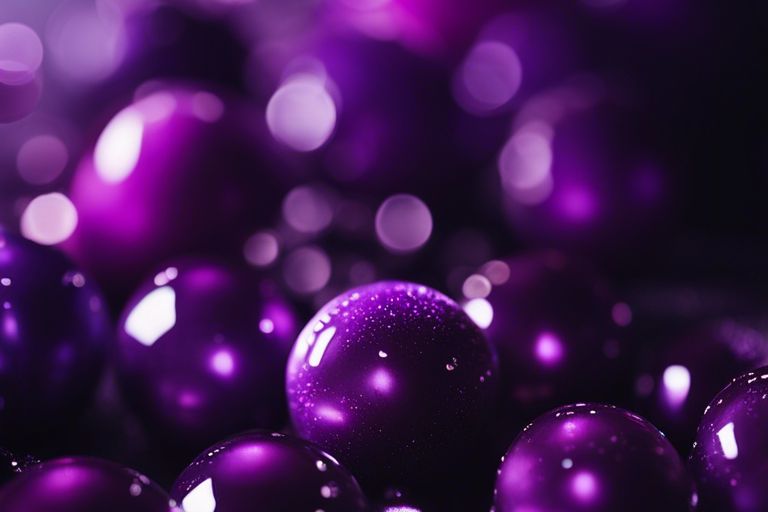What Does The Color Bue Mean?
You may have pondered about the significance of the color blue, which permeates our world in various forms. From the vast skies above to the deep oceans below, blue is a hue that holds a multitude of meanings across cultures and contexts. In this informative exploration, we will examine into the science, psychology, and symbolism behind the enigmatic color blue, illuminating its profound impact on our perception and emotions. So, buckle up as we journey through the captivating realm of blue and uncover its fascinating secrets.

Key Takeaways:
- Calming and Tranquility: The color blue is often associated with feelings of calmness and serenity.
- Trust and Dependability: Blue is used to represent trustworthiness and reliability in various contexts.
- Productivity and Focus: Blue has been shown to enhance productivity and concentration levels.

The Origins of Blue
Your curiosity about the color blue is well-founded, as its history is rich and fascinating. Blue is one of the oldest colors used by human beings in art and decoration.
Historical Significance
Blue pigment was rare and expensive in the ancient world, making it highly prized among civilizations. The Egyptians were one of the first cultures to create a synthetic pigment, known as Egyptian blue, around 2600 BC. This innovation marked a significant milestone in the use and popularity of the color blue.
Cultural Associations
For centuries, blue has held deep cultural significance across various societies. In many cultures, blue is associated with royalty, power, and divinity. The color’s calming and tranquil qualities have also led to its association with peace and spirituality.
For instance, in Hinduism, blue is often associated with the god Vishnu, who symbolizes the preservation and protection of the universe. This connection demonstrates how different cultures have imbued the color blue with unique meanings and symbolism over time.
Blue in Nature
The Sky and the Ocean
Blue is a color that you commonly see in nature, especially when you look up at the sky or out at the vast ocean. The sky appears blue during the day because of the way Earth’s atmosphere scatters sunlight. Shorter blue wavelengths are scattered more than other colors, giving the sky its blue hue. Similarly, the ocean’s blue color comes from the water’s absorption of colors in the red part of the light spectrum, leaving behind the blue tones for you to admire.
Flowers, Fruits, and Animals
To experience the color blue in nature beyond the sky and the ocean, you can turn to various flowers, fruits, and animals. From delicate blue forget-me-nots to vibrant morning glories, flowers display shades of blue that can captivate your attention. Some fruits like blueberries and plums also showcase this hue, offering you a sweet and visually appealing treat. Additionally, certain animals, such as the iconic blue morpho butterfly or the majestic blue whale, proudly exhibit shades of blue in their natural habitats.
Flowers, fruits, and animals that feature the color blue have evolved unique characteristics that make them stand out in their environments. Whether it’s attracting pollinators, spreading seeds, or camouflaging from predators, the presence of blue in these natural elements serves important purposes beyond just the visual delight it brings to your surroundings.
Blue in Art and Design
Once again, you’ll find the color blue playing a significant role in the world of art and design. Its calming and serene qualities make it a popular choice for artists and designers looking to evoke a sense of tranquility and peace in their work.
Color Theory and Harmony
On the color wheel, blue is often referred to as a “cool” color, along with greens and purples. When paired with warm colors like reds and oranges, blue can create striking contrasts in a composition. This interplay of warm and cool colors adds depth and visual interest to artwork and design projects, creating a harmonious balance that is pleasing to the eye.
Famous Blue Artworks
Blue has been used in countless iconic artworks throughout history. From Vincent van Gogh’s “Starry Night” with its swirling blue night sky to Pablo Picasso’s “The Old Guitarist” featuring a melancholic blue figure, the color has been a powerful tool for conveying emotions and setting the mood in art.
Blue in Emotions and Psychology
Not only does the color blue have significance in various cultures and traditions, but it also plays a significant role in the domain of emotions and psychology. Blue is often associated with feelings of calmness, trust, and tranquility.
Calmness and Trust
Calmness is a state of being serene and composed, and the color blue is known to evoke such feelings within you. When you find yourself surrounded by shades of blue, whether in nature or in your environment, you may notice a sense of tranquility washing over you. Blue is also linked to trust – think about how the vast blue sky above or the deep blue ocean instills a sense of reliability and security.
Sadness and Melancholy
The color blue is not always synonymous with positivity; it can also represent feelings of sadness and melancholy. When you’re feeling blue, you may experience a sense of heaviness or sorrow that is often associated with this cool hue. In art and literature, blue is frequently used to depict melancholic emotions and expressions of grief.
Plus, certain studies suggest that the color blue can have a calming effect on your mind and body, possibly reducing stress and promoting a sense of peace and relaxation. So, the next time you’re feeling overwhelmed, surrounding yourself with shades of blue may help soothe your emotions and bring a sense of serenity to your day.

Blue in Branding and Marketing
Many companies choose the color blue for their branding and marketing efforts for several reasons. Blue is often associated with trust, dependability, and professionalism, making it a popular choice for businesses looking to convey reliability to their customers.
Logos and Advertising
One of the reasons companies use blue in their logos and advertising is because the color is often seen as calming and soothing. This can help create a sense of trust and security in the minds of consumers, making them more likely to feel comfortable doing business with a company that uses blue in their branding.
Consumer Perception and Loyalty
For consumers, seeing the color blue in branding can evoke feelings of tranquility and dependability. This can lead to increased loyalty towards a brand, as consumers are more likely to trust and continue purchasing from a company that they perceive as reliable and trustworthy.
Consumer perception plays a significant role in brand loyalty, and the color blue can help shape how consumers view a company. By incorporating blue into branding and marketing materials, businesses can tap into the positive associations that the color holds and cultivate a deeper sense of loyalty among their customer base.
Blue in Science and Technology
Light Waves and Electromagnetic Spectrum
To understand the color blue in science and technology, you need to first examine the world of light waves and the electromagnetic spectrum. Blue is a part of the visible spectrum of light, which ranges from red to violet. Each color corresponds to a different wavelength, and blue light has a shorter wavelength than red light.
Blue LEDs and Lasers
For a more technological perspective, let’s explore the fascinating world of blue LEDs and lasers. Blue light-emitting diodes (LEDs) and lasers have revolutionized the way we use light in everyday life. LEDs are used in everything from electronic displays to indicator lights, while blue lasers are vital components in Blu-ray technology and medical devices.
This breakthrough in LED and laser technology has opened up a whole new world of possibilities for how we interact with light in our daily lives. You can find blue LEDs and lasers in a wide range of applications, from entertainment and communication to scientific research and medical treatments.
Final Words
Upon reflecting on the color blue and its many associations, you can see that it holds multiple meanings depending on context, culture, and personal experiences. From serenity and calmness to trustworthiness and stability, the color blue carries a myriad of interpretations. Its presence in nature and its significance in art and design make it a versatile and powerful color that can evoke a range of emotions and ideas. Whether you find yourself drawn to the peaceful blue of a clear sky or feel reassured by the authoritative blue of a uniform, remember that color is a language that speaks to us on a subconscious level, shaping our perceptions and feelings in subtle yet profound ways.
Q: What does the color blue symbolize in different cultures?
A: Blue holds various meanings in different cultures. For example, in Western cultures, blue is often associated with peace, serenity, and calmness. In Eastern cultures, like China and India, blue is linked to immortality, spirituality, and wisdom. Native American cultures view blue as a color of protection and strength.
Q: What emotions are commonly associated with the color blue?
A: Blue is often linked to feelings of calmness, tranquility, and trust. It is also known to evoke a sense of security, stability, and reliability. On the other hand, too much blue can sometimes come across as cold or distant.
Q: How does the color blue affect our psychology and behavior?
A: Blue has a calming effect on the mind and body, which can help reduce stress, lower blood pressure, and slow heart rate. It is often used in environments like bedrooms and offices to promote relaxation and productivity. Blue is also known to stimulate creativity and increase focus.






